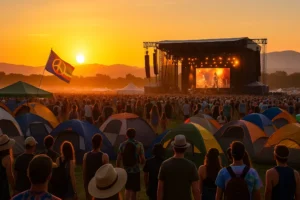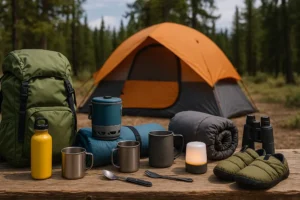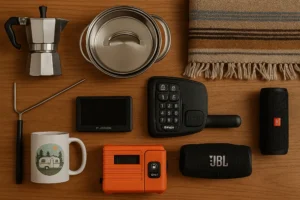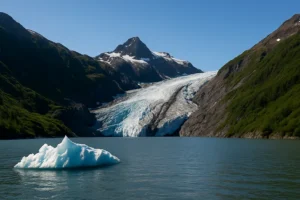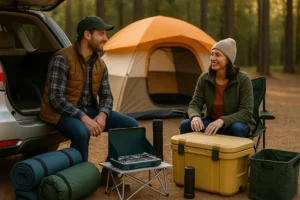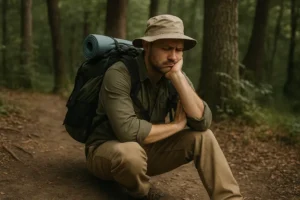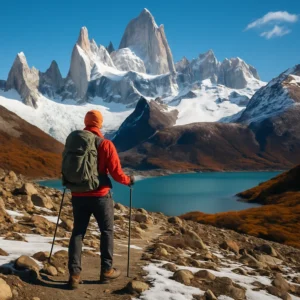If you’ve ever scrolled through RV forums, van life Instagram feeds, or chatted with seasoned road travelers, you’ve probably heard the phrase boondocking. But what is boondocking camping exactly? At its core, it’s the art of camping without hookups, away from traditional campgrounds, often in remote or unconventional places. It’s about freedom, self-sufficiency, and sometimes—finding the perfect million-dollar view for free.
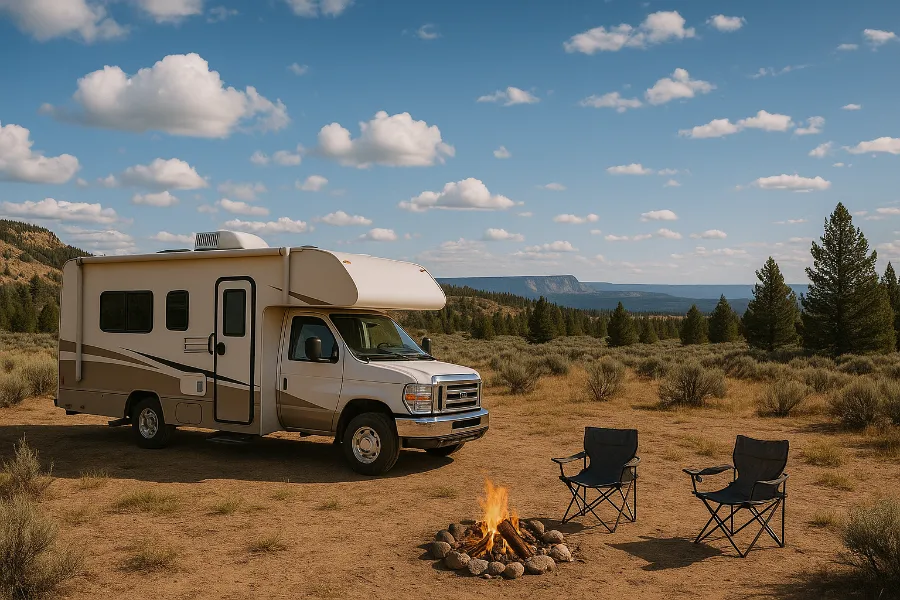
In this guide, we’ll dive deep into what boondocking camping really is, why people love it, where to find spots, what you need to prepare, and the essential etiquette that keeps this style of camping sustainable for everyone.
Understanding Boondocking
Boondocking, sometimes called dry camping or dispersed camping, means camping. without the standard amenities you’d find in a developed campground. No electrical hookups. No fresh water spigots. and also no sewage dumps. Often not even a picnic table or fire ring. It’s you, your RV or van (or sometimes just a tent), and nature.
The essence of boondocking is being completely self-reliant. You bring everything you need—water, power, food, and waste solutions—and you manage it all without external support.
Key differences from traditional camping:
- No hookups: You’re running on your own batteries, solar, or generator.
- No facilities: No bathrooms, showers, or camp stores.
- Location freedom: Instead of being tied to a reserved campground, you can camp on vast public lands or in overnight-friendly parking lots.
At first glance, this might sound intimidating. But for many, the appeal lies in the simplicity and independence it provides.
Why People Choose Boondocking
So why would anyone choose to give up running water and electricity? There are several compelling reasons why boondocking camping has exploded in popularity:
To Save Money
Campground fees can add up quickly, especially if you’re on the road for weeks or months. Boondocking is often free—or at most, costs a nominal permit fee. For full-time RVers, this can mean saving hundreds or even thousands of dollars a year.
For the Solitude and Freedom
There’s nothing like waking up to silence, your only neighbors being a few deer wandering through a meadow. Boondocking offers the chance to avoid crowded campgrounds and immerse yourself in wide-open spaces.
For the Challenge and Adventure
Boondocking pushes you to become more self-reliant. You’ll learn to conserve water, manage your power, and adapt to unpredictable conditions. Many campers compare it to backpacking with the bonus of a comfortable rig nearby.
Where You Can Boondock
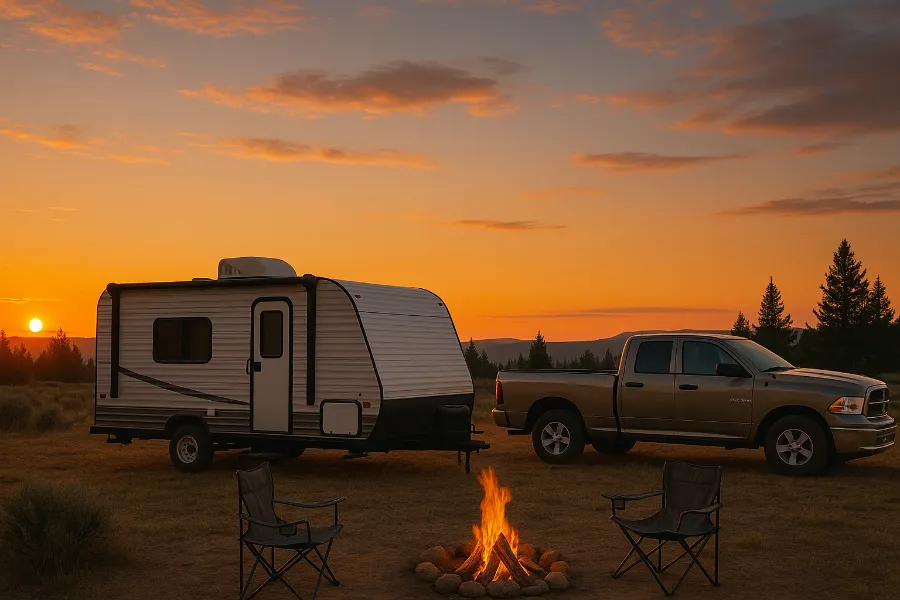
Boondocking spots fall into a few main categories, each with its own pros and cons.
Public Lands
The majority of boondocking camping happens on public lands, which make up nearly one-third of the U.S. Some of the most popular options include:
- Bureau of Land Management (BLM) Lands: Found primarily in the western U.S., offering vast stretches of desert, forest, and mountains.
- National Forests: Over 188 million acres of forest land open to dispersed camping.
- U.S. Army Corps of Engineers (USACE): Known for sites near lakes and rivers.
- Fish & Wildlife Lands: Limited areas allow camping, so check the rules.
Parking Lot Camping
Yes, parking lot boondocking is a thing. Walmart, Cracker Barrel, Cabela’s, casinos, and even some rest areas allow overnight stays. The key here is discretion: no awnings, no BBQ setups—just a quiet place to park overnight.
Private Land (Mooch-Docking)
Sometimes, boondocking happens in a friend’s driveway. It may not be glamorous, but it’s convenient. Platforms like Boondockers Welcome connect travelers with hosts across the country.
Rules, Regulations, and Stay Limits
Even though boondocking feels like “anything goes,” there are still rules to follow. Most federal lands have a 14-day stay limit, meaning you must move at least 25 miles away after your stay. Some places are stricter (like 3-day limits near Grand Teton National Park), while others are more generous (up to 42 days in California’s Inyo National Forest).
Key regulations to keep in mind:
- Always camp on previously used sites when possible.
- Stay at least 200–300 feet from water sources.
- Pack it in, pack it out—always.
- Follow fire restrictions and local guidelines.
Failing to follow the rules doesn’t just risk fines—it also threatens access for everyone else.
How to Find Boondocking Sites
Finding boondocking camping spots has never been easier thanks to technology. Here are the best resources:
- Campendium: Filter for free public land camping.
- The Dyrt (Pro version): Includes thousands of free, drive-in accessible locations.
- iOverlander: Volunteer-driven database with worldwide wild camping spots.
- FreeCampsites.net: A classic go-to for free camping info.
- AllStays: Comprehensive RV app with filters for free sites and overnight parking.
Pro tip: Always arrive during daylight so you can scout the road conditions before committing. A dirt road that looks manageable on Google Maps may actually be impassable after rain.
Preparation & Essentials
Boondocking is rewarding, but it requires preparation. Here’s what to consider before heading out:
Vehicle Considerations
- Can your RV handle rough forest roads?
- Do you have a 4×4 if needed?
- Is there enough clearance to avoid damaging your rig?
Managing Resources
- Water: Bring extra tanks and conserve usage. Plan for at least 1 gallon per person per day for drinking.
- Power: Solar panels, upgraded batteries, or a quiet generator are boondocker essentials.
- Waste: Never dump black or gray water on the ground. Always use dump stations.
Safety and Emergency Gear
- Roadside emergency kit (jumper cables, tow straps, tire repair tools).
- Maps (digital and paper backups).
- A way to call for help (satellite phone or GPS communicator if you’re out of cell range).
Boondocking Etiquette
Boondocking is a privilege. To keep it that way, follow good etiquette:
- Leave No Trace: Pack out everything, even toilet paper.
- Be quiet: Limit generator use and respect the peace of others.
- Respect boundaries: Don’t camp on private land without permission.
- Be a good guest in parking lots: Buy something from the store, park where directed, and leave early.
One careless camper can ruin a location for everyone—don’t be that person.
Tips for Beginners
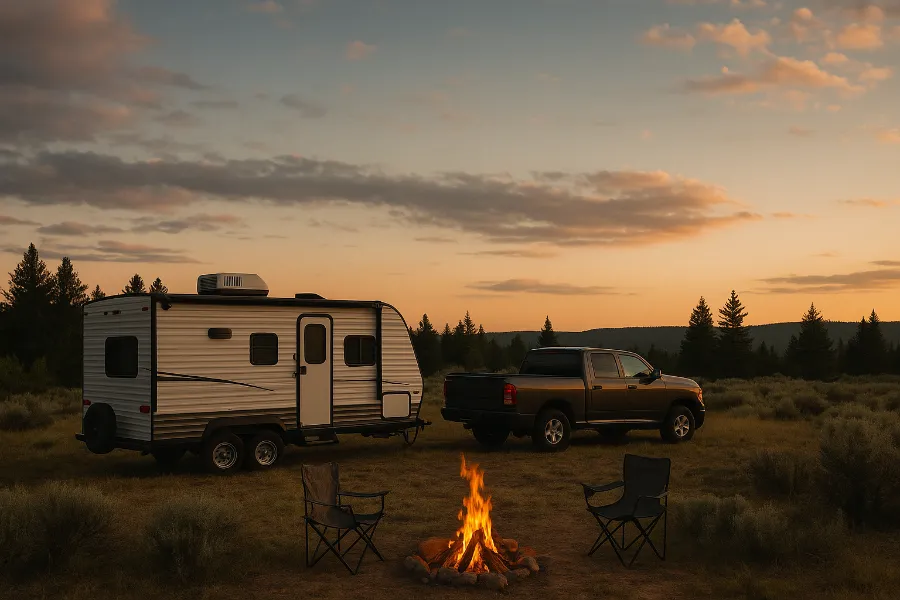
If you’re new to boondocking camping, ease into it:
- Try dry camping at a regular campground first by skipping hookups.
- Practice conserving water and power before heading remote.
- Choose beginner-friendly boondocking spots with easy access roads.
- Always have a backup plan in case your chosen spot doesn’t work out.
Over time, you’ll figure out your personal style—whether you prefer quiet desert landscapes, mountain forests, or just quick overnight stops at a Walmart.
Conclusion: Why Boondocking is Worth Trying
So, what is boondocking camping really? It’s freedom. It’s waking up surrounded by nature, not RVs crammed into a row. Also, it’s being self-sufficient, adventurous, and intentional with your resources.
Boondocking camping isn’t for everyone—but for those who try it, it often becomes the most rewarding part of road life. Whether you’re looking to save money, disconnect from the noise of modern life, or challenge yourself with true off-grid living, boondocking opens the door to a whole new way of exploring the world.
Pack smart, follow the rules, and treat the land with respect. Chances are, after your first trip, you won’t be asking “what is boondocking camping” anymore—you’ll be planning your next off-grid escape.


